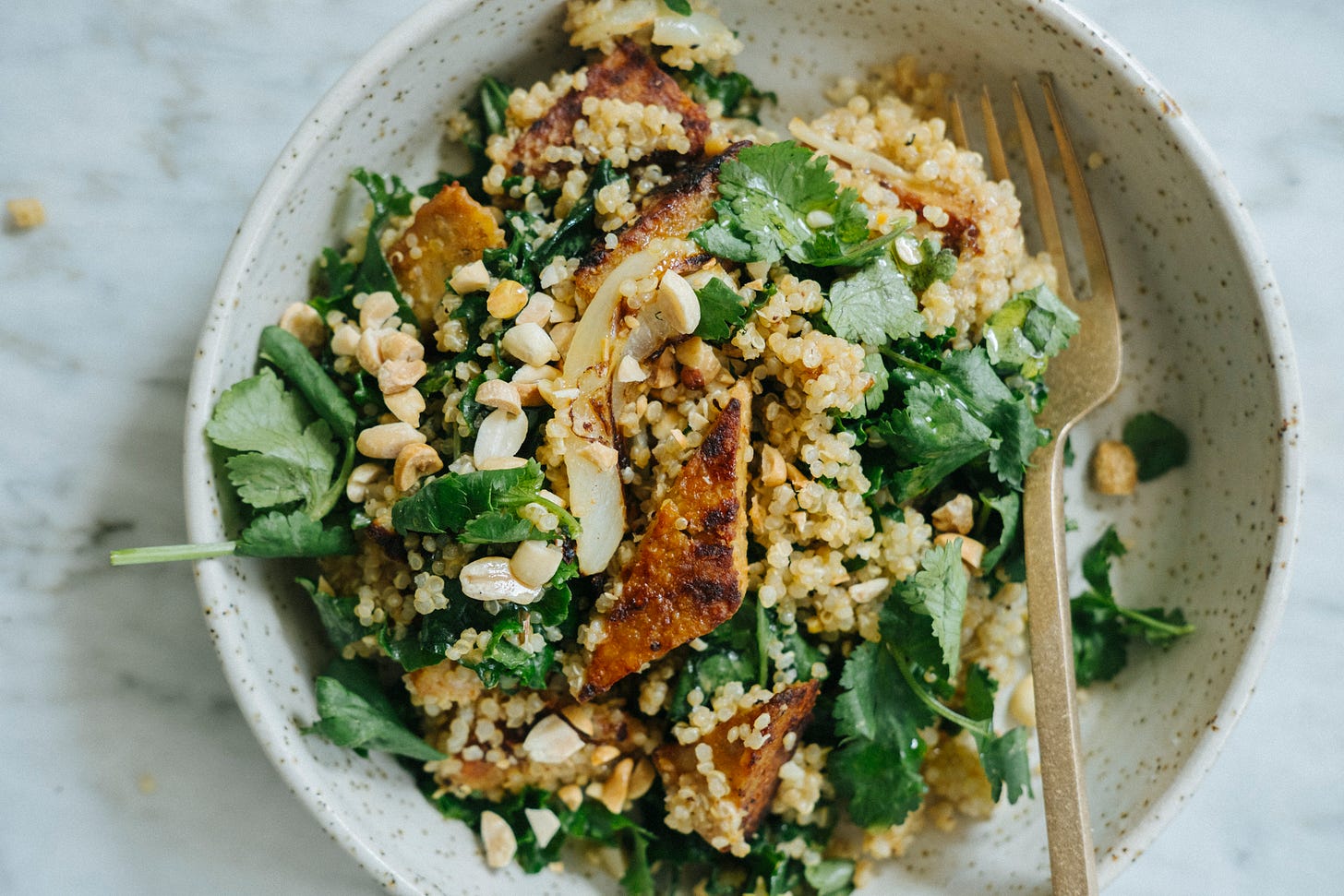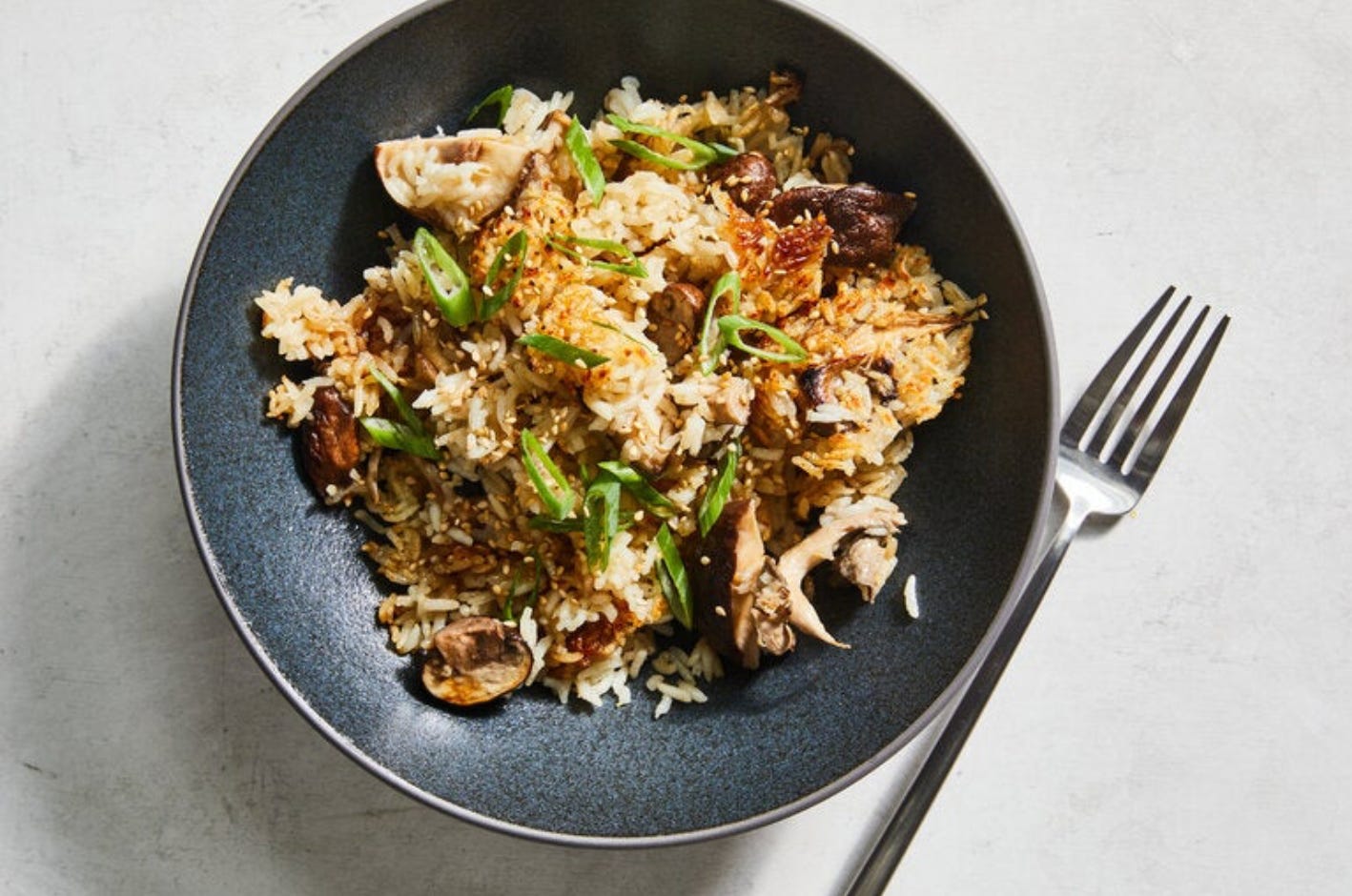Welcome to To Vegetables, With Love, a celebration of a vegetable life, less ordinary.
My book Tenderheart is available from Books are Magic, Kitchen, Arts and Letters, Book Larder, Bold Fork Books and also here or here.
It is fascinating to see the evolution of ingredients in food and specifically, food media. The ingredients that we take for granted now - tofu, miso, chili crisp, gochujang - would have been seen as “exotic” 10 years ago. Mainstream food has come a long way in recent times and with the cultural diversification of food media, and with the inclusion of recipe developers and food writers from a range of different backgrounds, we now all benefit from this deeper knowledge of ingredients and how to use them.
That’s not to say the job is done. As a freelance recipe developer, I see firsthand that there are still many non-European ingredients which are not deemed mainstream enough for widespread (Western) consumption and hence, inclusion in recipes. And to change that….well it’s is a process.
For editors, it’s a chicken-and-egg situation. They need to give their audience what they want. Nowadays, they can easily get data on what recipes are popular and what ingredients their readers are searching for. And if they see an overwhelming demand for chicken and pasta recipes, that is what they will focus upon delivering. We are always taught to give the customers what they want. Supply must equal demand. But if this is the case, how do we move the needle forward, in the direction where less-well-known-to-the-West ingredients get a chance to shine, and hence, for more people to get to know about them?
My answer: we try, and try again.
A great example is fermented tofu (sometimesromanized to fu ru, fu yu, dou fu ru). Like perhaps how tofu was considered 20 years ago, it is a polarizing ingredient. For those who have not tasted it, it is salty, pungent and creamy. The exact flavour is difficult to capture in words but personally, I think the word ‘funky’ sums it up best. It is funky in the way kimchi or many other fermented products are. Over the years, many food writers have tried to explain what fermented tofu tastes like - some liken it to blue cheese - but in reality, I think these comparisons are reductive. Fermented tofu is what it is, and what it is is unlike any other ingredient out there.
I have made considerable efforts trying to get fermented tofu more attention in mainstream media. A couple of years ago, I was heartened to see fermented tofu on coveted New York menus. At Bonnie’s (one of my favourite NYC restaurants), chef Calvin Eng liberally uses fermented tofu in several dishes including a standout fuyu cacio e pepe mein and the dau gok (Chinese long/snake beans). It was so exciting to me to see a young Cantonese American chef use an iconic Chinese ingredient in such a bold and mainstream way. In 2022, I wrote a short ‘trend piece’ on Bonnie’s and also three other chefs featuring fermented tofu on their menus - Eric Sze from Wen Wen (also in NYC), Lucas Sin from Junzi (New Haven) and Brandon Jew from Mister Jiu’s (San Francisco) - for The New York Times T Magazine.
As a recipe developer, I took this as license to pitch more recipes featuring fermented tofu. But the road to popularizing fermented tofu as a pantry staple at home has been difficult. It is still a tough ingredient to get your head around because its flavour profile is so different to other umami agents, like miso, gochujang and even soy sauce, which have broken through to the other side.
Last year, I did achieve a breakthrough - I pitched a fermented tofu zucchini udon dish and it was commissioned! I took my ‘softly, softly’ approach - present a polarizing ingredient in a non-polarizing dish, make it palatable to Western palate, ease the home cook into understanding the potential of the ingredient. It is what recipe developers who grew up with a non-white perspective must do. We want to present delicious, simple recipes, but we also have a responsibility to educate, to open other’s eyes, to redefine food in a way that includes us and our flavours.
I started this conversation to talk about polarizing ingredients which have crossed over to the mainstream, and while fermented tofu has some ways to go, tempeh, another fermented soy bean product, has achieved considerable success. A comfort food of its native Indonesia, tempeh is made of soybeans which are boiled, dehulled, and soaked before being inoculated by the mycelium of Rhizopus mold. The beans are then wrapped and shaped into a cake before being left for incubation. Tempeh is not funky like fermented tofu but it does have a specific texture. If not prepared well, the beans can be mushy. For me, I didn’t always love tempeh but the turning point was discovering that it responds well to high heat cooking - either on the stove top or oven - and marinade helps too.
This week’s recipe is a remix of my beloved Ginger-peanut kale with tofu and quinoa salad from my first cookbook Community. It was one of the most popular salads from my salad business Arthur Street Kitchen, and back in those days, customers nicknamed it “crack salad”. I got criticism once for sharing referring to it that way, so that name is no longer used in any way, but its crave-ability remains. This version borrows elements of that salad but reimagines them - the peanut sauce is simplified, the kale is left raw, the tofu is replaced with peanut marinated tempeh.
COOK / EAT / SHARE
New on NYT Cooking this high-on-comfort one pot mushroom and ginger rice. It’s a riff on my mother’s gai fan (chicken rice).
Also there is a brand new noodle recipe - spicy mushroom and tofu mazemen. Mazemen, or mazesoba as it is sometimes called, is a brothless ramen. I fell in love with this dish in Sydney a few years ago, when I tried it at Ilko Mazesoba. If you’re not in Sydney, try my recipe at home.
There’s been much joy for the 5-ingredient Baked tomato pasta with harissa and halloumi. Have you tried it yet?
THIS WEEK’S RECIPE
Ginger-peanut tempeh with kale and quinoa
© Hetty Lui McKinnon for To Vegetables, With Love







